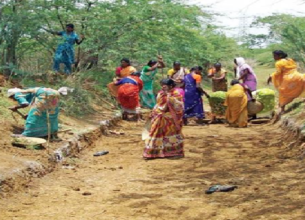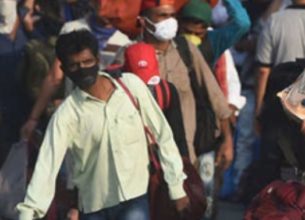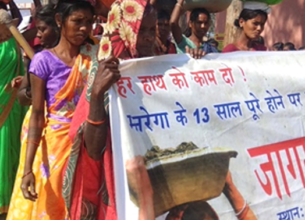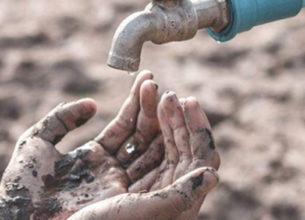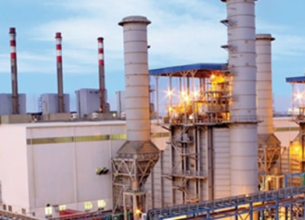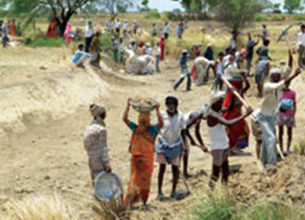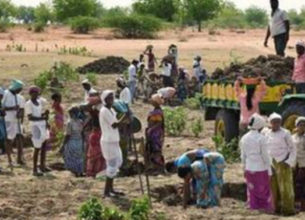MGNREGA LABOURERS WAGE HIKE
Why in News?
- The Central Government has approved a double-digit hike in the wages of manual labourers under Mahatama Gandhi National Rural Employment Guarantee Act (MGNREGA). The workers will get a wage hike from Rs. 13 to Rs. 34.

Highlights:
- The average per day wage rate for unskilled work under the Mahatma Gandhi National Rural Employment Guarantee Scheme will rise 11 per cent from ₹182 to ₹202 for the fiscal year 2020-21.
- For 2019-20, the average wage rate was almost unchanged, with a rise of just 1.6 per cent.
- Although the MGNREGA wage notified for 2020-21 is substantially higher, it continues to be 40-50 per cent lower than the minimum wages paid to unskilled agricultural workers.
- The minimum wages are revised twice a year by the chief labour commissioner, when the variable dearness allowance is adjusted to changes in the consumer price index.”
- The prevailing rates for unskilled agricultural workers are between ₹347-383 per day, depending on the region of employment.
CPI-linked Changes:
- The MGNREGA wage revision is linked to the changes in the Consumer Price Index for Agricultural Workers (CPI-AL).
- A committee set up by the government had recommended using CPI-Rural (CPI-R) instead of the existing CPI-AL for revising MGNREGA wages every year.
- There is a big variation in the wages paid to MGNREGA workers across States.
MGNREGA:
- MGNREGA (Mahatma Gandhi National Rural Employment Guarantee Act) is the largest work guarantee programme in the world.
- It was enacted in 2005 with the primary objective of guaranteeing 100 days of wage employment per year to rural households.
- It aims at addressing causes of chronic poverty through the ‘works’ (projects) that are undertaken, and thus ensuring sustainable development.
Funding:
- Funding is shared between the centre and the states.
- There are three major items of expenditure – wages (for unskilled, semi-skilled and skilled labour), material and administrative costs.
- The central government bears 100% of the cost of unskilled labour, 75% of the cost of semiskilled and skilled labour, 75% of the cost of materials and 6% of the administrative costs.



